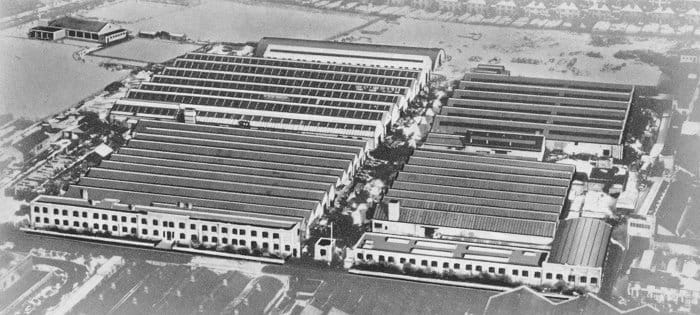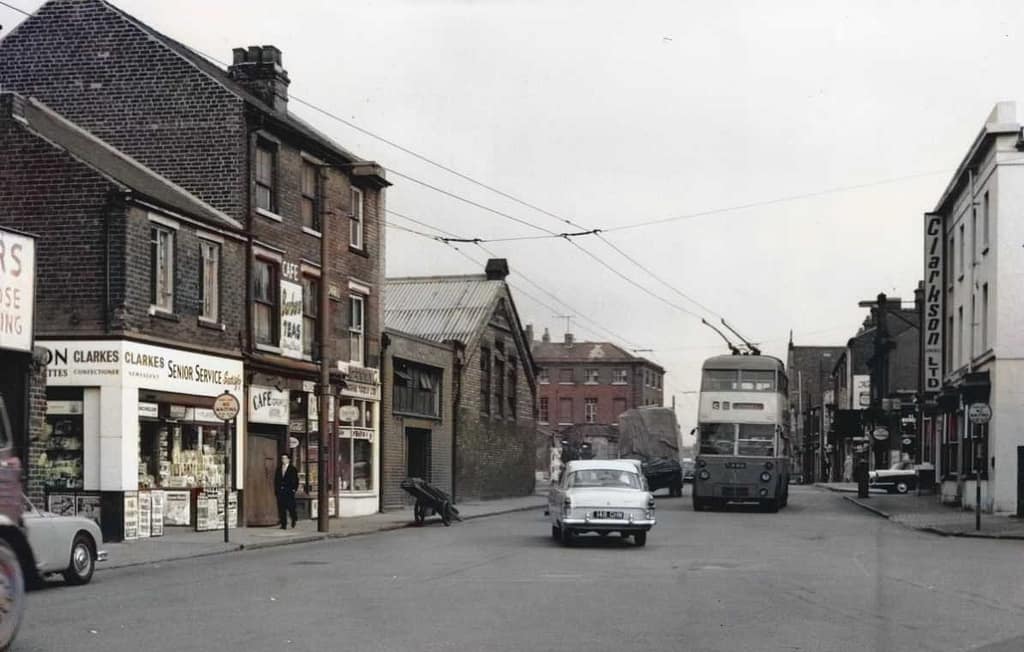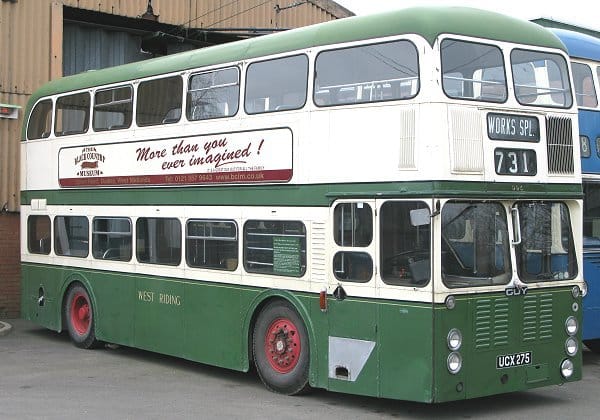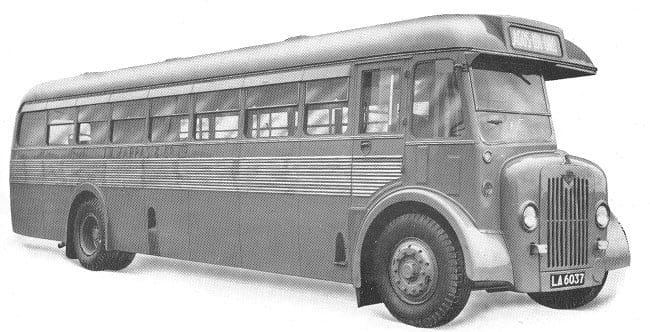Chairman's Note: This is the first post in a series entitled "WV101", a look at the building blocks of Wolverhampton history. It is intended as an ongoing series of blog posts and podcasts that record the history passed down from previous generations about the key names, locations and events in our local story. With that in mind, WV101 Part 1 is about the "feather in Wolverhampton's cap", Guy Motors. If you have memories to share, please do so via the comments section, or email me at enquiries@museumofwvandss.org.
Guy Motors, a name deeply rooted in Wolverhampton’s industrial heritage, established a global presence through its innovative designs and commitment to quality. The company’s vehicles traversed continents, leaving a lasting impact on transportation systems worldwide.
South America and India: Early Triumphs

A Guy Motors ambulance at Aldridge Transport Museum
One of Guy’s early international successes came in 1924 with the introduction of the UK’s first dropped-frame chassis designed specifically for passenger vehicles. This innovative design, which lowered the centre of gravity, improved accessibility, and enhanced handling, quickly captured the attention of operators beyond the UK. Soon after its launch, the company secured a significant order for 170 buses from Rio de Janeiro, marking a significant step in the firm’s global expansion. This success in South America demonstrated the appeal of Guy’s forward-thinking designs and the company’s ability to meet the needs of diverse markets.
Guy Motors’ reputation for robust and reliable vehicles extended to the military sector as well. In 1928, the company secured a contract to supply over 100 six-wheeled armoured cars to the Indian government. These armoured cars, based on Guy’s proven commercial vehicle chassis, provided a robust and versatile platform for military operations. This order underscored the firms’ ability to meet the demanding requirements of military customers and solidified the company’s position as a supplier of high-quality vehicles for specialised applications.
Guy Motors in South Africa: Domination and Downfall

The Guy Motors Factory in 1948.
Guy Motors’ experience in South Africa was a tale of initial triumph followed by a costly misstep that ultimately contributed to the company’s downfall.
The Rise: Capitalising on the Trolleybus Boom

Guy Motors’ foray into the South African market began with the export of trolleybuses, a form of electric transportation that proved popular in South Africa during the mid-20th century. Trolleybuses offered advantages over trams, such as quieter operation, improved reliability, and lower running costs.
The company further solidified its presence in South Africa through the acquisition of Sunbeam Commercial Vehicles Limited in 1948. From that point forward, all Guy trolleybuses carried the Sunbeam name. By the mid-1950s, Sunbeam trolleybuses had become the dominant brand in South Africa, surpassing all other makes combined.
This success can be attributed to several factors:
- Innovative Designs: Trolleybuses incorporated advanced features, such as regenerative braking systems, which enhanced efficiency and performance.
- Proven Reliability: Guy vehicles had a reputation for reliability and durability, which appealed to operators in South Africa.
- Adaptability: Guy Motors offered a range of trolleybus models to suit different operating environments and passenger capacities.
The Fall: A Costly Foray into Direct Sales
In 1955, Guy Motors made a fateful decision to open subsidiaries in Cape Town, Durban, and Johannesburg. This marked a departure from the company’s previous reliance on local agents for sales in South Africa. The decision was driven by a desire to increase control over the South African market and potentially boost profits. However, it proved to be a costly mistake.

The direct sales model exposed Guy Motors to several financial risks:
- Hire Purchase Defaults: Many vehicles were sold on hire purchase, and Guy Motors was contractually obligated to cover losses incurred by finance companies due to customer defaults. This proved to be a common occurrence, leading to significant financial drain.
- Overly Generous Trade-In Allowances: Guy Motors offered excessively high trade-in allowances, accepting old and dilapidated vehicles at inflated prices. This practice further eroded the company’s profitability in South Africa.
The South African operation lost £300,000 annually, placing a significant strain on Guy Motors’ overall financial health. By 1961, these losses, combined with the financial burden of the unsuccessful “Wulfrunian” bus model, forced Guy Motors into receivership.
A Missed Opportunity
The failure of the South African venture had a cascading effect on the company. The financial drain prevented it from adequately addressing the technical issues that plagued the “Wulfrunian” bus, ultimately leading to its demise. The loss of revenue and reputational damage from the “Wulfrunian” debacle further weakened Guy Motors, making it an attractive acquisition target for Jaguar in 1961.
Had Guy Motors not ventured into direct sales in South Africa, the company might have had the financial resources to rectify the “Wulfrunian’s” shortcomings and continued producing innovative vehicles. The South African experience serves as a cautionary tale of how a strategic misstep in a key market can have far-reaching consequences, even for a company known for engineering excellence and a strong global presence.
The Guy Motors Arab

Meeting Diverse Needs Across the Commonwealth and Europe
Guy Motors adapted the “Arab” bus to suit a variety of markets and operating conditions. The example shown above was destined for Lagos, Nigeria. The adaptability of the “Arab” was due to:
- Single-Deck and Double-Deck Configurations: The “Arab” was offered in both single-deck and double-deck configurations. Double-deck buses were popular in large cities, while single-deck buses were more suitable for rural areas and smaller towns. The availability of both configurations allowed Guy Motors to cater to a wider range of operators and routes.
- Engine Options: Guy Motors offered a variety of engine options for the “Arab” bus, including the Gardner 5LW and the larger 6LW for hilly areas. The 5LW was a reliable and fuel-efficient engine that was well-suited to urban operations, while the 6LW provided additional power for challenging terrain.
- Transmission Options: The “Arab” was available with both a traditional manual gearbox and a semi-automatic transmission. The semi-automatic transmission was easier to operate and could improve fuel economy, making it a desirable option for some operators.

The “Big J” Truck: A Global Success Fueled by Adaptability
The “Big J”
The introduction of the “Big J” (Big Jaguar) truck in 1964 marked another significant milestone in Guy Motors’ global journey. The model was introduced to replace the previous “Warrior” and “Invincible” trucks. The “Big J”, known for its robust construction and adaptability, was exported to numerous countries, further solidifying Guy Motors’ international reputation.
The firm was known for building trucks and buses to customer specifications. The “Big J” continued this practice, offering a range of gearboxes and engines to suit the needs of various customers. This adaptability was especially important in the Far East markets where the “Big J” was popular.
The company provided comprehensive support, including the supply of complete knock-down (CKD) kits for assembly in overseas markets. These CKD kits allowed local assembly operations to tailor the “Big J” to specific market requirements, making it a versatile and cost-effective solution for operators worldwide. Support like this further facilitated the “Big J”‘s success across the world.
Around 16,000 “Big J” chassis were produced, keeping the Guy factory open for a time. This was despite Leyland (which had acquired Guy Motors) intended to close it in the mid-1970s. The “Big J” emblem was eventually replaced by the BL (British Leyland) emblem, however.
Enduring Legacy: A Symbol of British Engineering Excellence
Guy Motors’ global reach stemmed from the company’s unwavering commitment to engineering excellence, customer-centric approach, and ability to adapt to diverse market needs. From the early success of the dropped-frame chassis in South America to the widespread adoption of the “Arab” bus throughout the Commonwealth, Guy Motors left an indelible mark on transportation systems across the globe.
While Guy Motors ceased production in 1982, the company’s legacy lives on through the vehicles that continue to operate in various parts of the world. The Guy name remains a symbol of quality, durability, and innovation. Truly, a “feather in Wolverhampton’s cap”, the company had an enduring impact on the global automotive landscape.
Sources
If you’re interested in more local history, perhaps you’d be interested in this tale about the hidden history of Wolverhampton’s Synagogue?
